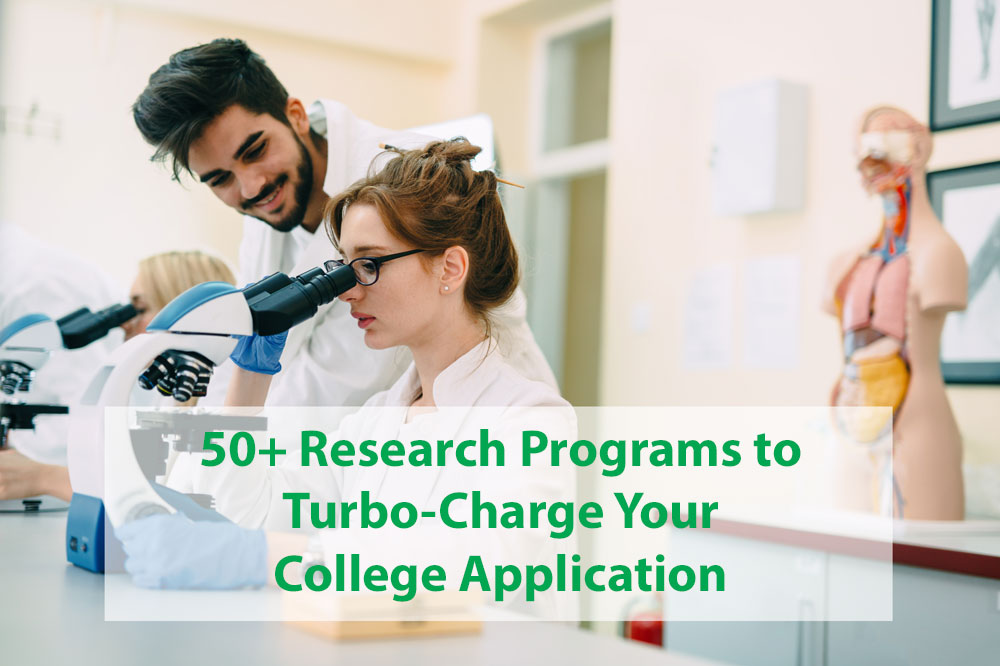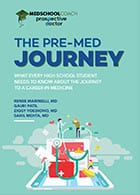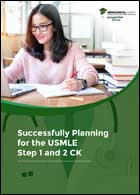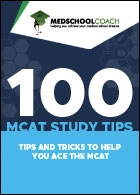
The Power of High School Research
Engaging in research during high school does more than strengthen a college application. It sparks curiosity, sharpens problem-solving skills, and connects students with mentors who can shape future goals.
Competitive colleges value sustained, meaningful research experiences. Short exposures count less than programs where students tackle real projects, analyze data, and present results.
Research also develops skills that matter across every field, including critical and analytical thinking, data interpretation and scientific writing, collaboration and independent work, and persistence when experiments fail.
This guide features over fifty research opportunities, spanning a wide range of interests.
Jump to a section:
- Premier Research Opportunities
- Life Sciences and Biomedical Research
- Physical Sciences, Math, Robotics, and Engineering
- Computer Science and Artificial Intelligence
- Humanities, Social Sciences, and Arts
- Multidisciplinary and Interdisciplinary Fields
Each listing includes details about format, cost, eligibility, and selectivity — helping readers find a program that fits both their passions and their budget.
Premier Research Opportunities
Top-tier programs, often run by elite universities or national research institutes, cover tuition and sometimes pay stipends.
These institutions invest heavily to spot and train future researchers. Students gain access to world-class labs, faculty mentors, and equally driven peers.
Spaces are scarce. Most programs favor applicants with strong academics or prior research, so beginners may treat them as stretch goals.
Program Deep Dives (Examples):
Research Science Institute (RSI) at MIT
One of the most prestigious pre-college STEM programs globally. RSI is a six-week, entirely free residential experience hosted at MIT.
Approximately 80 rising seniors complete intensive research projects under MIT faculty mentorship, alongside college-level science and math coursework. The program culminates in written and oral presentations.
Admission is extremely competitive, often favoring students with significant prior research achievements. International students apply through a separate process.
Simons Summer Research Program (Stony Brook University)
Hands-on STEM research program alongside Stony Brook faculty. Free for commuters, with a $1,000 stipend. A housing fee applies for residential students.
Selection is highly competitive.
Clark Scholars Program (Texas Tech University)
Seven-week residential research program offering experiences across STEM, humanities, and social sciences. Participants receive a $750 stipend.
Highly selective. Applicants must be at least 17 years old by the program start date.
Jackson Laboratory Summer Student Program (JAX)
Ten-week residential program focused on genetics and genomics research. Held at JAX campuses (Highseas or University of Saint Joseph).
Free program covering transportation, room, and board, with a $6,000 stipend. Eligibility: Students must be 18 years old and have completed 12th grade by the start.
National Institutes of Health (NIH) Summer Internship Program (SIP)
Paid internships (8–10 weeks) within the NIH Intramural Research Program, primarily at Maryland campuses, with limited positions elsewhere.
Interns gain experience working on active biomedical research projects. Stipends vary based on education level.
Eligibility: U.S. citizens or permanent residents. Open only to high school seniors, typically 18+ or 17 with waivers.
Salk Institute Heithoff-Brody High School Scholars
Eight-week paid internship at the renowned Salk Institute in La Jolla, California.
Students work directly with Salk scientists, participate in workshops, and present at a final research symposium.
Eligibility: Students aged 16+ who reside and attend school in San Diego County.
Rockefeller University Summer Science Research Program (SSRP)
Completely free, non-residential STEM research program hosted by The Rockefeller University in New York City.
Participants work in teams to design research projects based on their scientific interests.
Targets rising juniors and seniors who are at least 16 years old.
MedSchoolCoach Research Scholars Program
Ten-week personalized virtual mentorship program for high school students. Students complete original research projects in fields such as medicine, public health, neuroscience, computer science, and environmental science.
The Silver Package ($3,000) includes weekly mentorship sessions, college admissions strategy, and a recommendation letter opportunity. The Gold Package ($4,000) adds extended mentorship for journal publication support.
Rolling admissions. Admission is selective, ideal for highly motivated students.
Note: These elite programs aim to identify and cultivate exceptional young talent for future research careers. They typically favor students with strong academic credentials, meaningful research engagement, and a genuine passion for discovery. Programs like these serve as aspirational targets for students serious about pursuing research at the highest level.
Want to make your college application stand out?
Download our free guidebook on how to leverage research and even get started on your own research project!
Life Sciences and Biomedical Research Programs
For students passionate about biology, medicine, or neuroscience, there are many incredible opportunities to dive into real-world research.
These programs offer hands-on lab work, mentorship from top scientists, and in some cases, generous stipends.
Whether you dream of studying genetics, tackling public health issues, or exploring the brain, this list can help you find the perfect starting point.
Jackson Laboratory Summer Student Program (JAX)
A ten-week residential program focused on genetics and genomics research. Highly competitive, selecting around 40 students.
Free program covering transportation, room, board, and includes a $6,000 stipend.
Eligibility: Students must be 18+ and have completed 12th grade by program start.
NIH Summer Internship Program (SIP)
Paid summer internships (8–10 weeks) at NIH labs, mainly in Maryland.
Interns work on active biomedical research projects alongside leading scientists.
Eligibility: U.S. citizens or permanent residents. Only high school seniors eligible. Must be 18+ or meet proximity/waiver conditions.
Salk Institute Heithoff-Brody High School Scholars
Eight-week paid internship at the renowned Salk Institute in La Jolla, California.
Students work on biological research projects and present at a research symposium.
Eligibility: 16+ years old, enrolled in a San Diego County school.
Stanford Institutes of Medicine Summer Research (SIMR)
Eight-week mentorship and research program at Stanford.
Fields include immunology, neurobiology, cancer biology, bioengineering, stem cell medicine, cardiovascular biology, bioinformatics, and genetics.
Minimum $500 stipend with additional grants available for underrepresented students.
Admission extremely competitive (acceptance rate below 3 percent), with a preference for Bay Area students.
Ohio State Neuroscience Research Internship
Seven-week NIH-funded paid internship at OSU’s College of Medicine.
Focus areas include neuroscience, neurological injury, and neurodegeneration.
Open to rising juniors and seniors, especially those from underrepresented backgrounds.
In-person, non-residential program with paid parking included.
Johns Hopkins Internship in Brain Sciences (JHIBS)
This program offers two formats for rising juniors and seniors:
- In-Person: Eight-week paid internship for Baltimore City residents. Includes research mentorship, stipends ($15/hour), and transportation support.
- Virtual: Five-week online experience for students across North America, focused on professional development and lab techniques (certificate awarded).
BRAINYAC (Columbia Zuckerman Institute)
Immersive neuroscience research apprenticeship for NYC students (grades 10-11) enrolled in specific partner programs.
Students work in Columbia University labs and receive stipends.
High School Scientific Training and Enrichment Program (HiSTEP / HiSTEP 2.0)
NIH programs designed to broaden biomedical career exposure for students from disadvantaged backgrounds or with limited research experience.
Includes workshops, lectures, and stipends.
Eligibility based on GPA, school location, and other criteria related to access and equity.
MedSchoolCoach Research Scholars Program
A personalized, 10-week virtual mentorship program. Students design and complete an original research project in fields like medicine, neuroscience, public health, and computer science.
Participants work one-on-one with a PhD mentor, develop a polished research paper, and receive strategic college admissions support.
Rolling admissions, flexible start dates, and selective entry.
RAHSS (Research Assistantships for High School Students)
NSF program supporting paid high-school assistantships in biological sciences labs.
Individual opportunities vary depending on participating principal investigators and host institutions.
Neuroscience Focus
Dedicated neuroscience options for students passionate about the brain:
- JHIBS (Johns Hopkins) – Paid in-person or virtual research internships focused on brain sciences.
- OSU Explorations in Neuroscience – Seven-week paid neuroscience internship at Ohio State for rising juniors and seniors.
Turn your curiosity into a project that stands out.
Take the first step toward original research today.
Physical Sciences, Math, Robotics, and Engineering Programs
Students passionate about physics, math, engineering, or robotics will find incredible ways to sharpen their skills through research and hands-on experiences.
These programs range from university lab internships to national STEM competitions, with opportunities both in-person and online.
Whether you’re aiming for aerospace innovation, computer engineering, or solving complex equations, this list can help you find the right path forward.
Boston University RISE (Research in Science & Engineering)
A six-week program for rising seniors offering two tracks: an Internship track with hands-on experimental research, and a Practicum track focused on computational fields like astronomy, biology, or physics.
Students can participate as residents or commuters. RISE is fee-based.
UIUC Grainger Young Scholars Summer STEMM Research
Hosted by the University of Illinois Urbana-Champaign, this six-week, in-person research experience is free, including housing, meals, and a monetary award.
Research fields include cancer immunology, neuroscience, AI, physics, quantum mechanics, bioengineering, and electrical engineering.
Open to students from specific Midwestern states and traditionally excluded groups.
George Mason University ASSIP (Aspiring Scientists Summer Internship Program)
A flexible, eight-week summer research experience across GMU campuses.
Free aside from a $25 application fee, with waivers available for financial need.
Formats include remote, in-person, or hybrid options.
Eligibility starts at age 15 or 16 depending on lab safety requirements.
Garcia Summer Research Program (Stony Brook University)
Seven-week intensive program focused on polymer science and technology.
Students receive formal instruction and conduct independent research projects.
Fee-based: lab usage ($3,700) and optional housing ($3,000+).
Applicants must be 16+, with strong academic records and coursework in science/math.
High School Honors Science, Math, and Engineering Program (HSHSP) (Michigan State University)
A prestigious seven-week residential research program for rising seniors.
Focuses on science, engineering, and mathematics apprenticeships.
Fee-based (around $4,000).
Note: HSHSP is not running in summer 2025.
PROMYS (Program in Mathematics for Young Scientists) (Boston University)
Six-week residential program for students aged 14–18 passionate about deep mathematical exploration.
Fee-based, but generous financial aid ensures that cost is not a barrier.
Summer Science Program (SSP)
Five-and-a-half-week residential research program hosted at multiple universities.
Research tracks include Astrophysics, Biochemistry, Bacterial Genomics, and Synthetic Chemistry.
Targets rising seniors. Fee-based ($9,800) but meets 100% of demonstrated financial need.
COSMOS (California State Summer School for Mathematics & Science) (University of California)
Four-week residential STEM enrichment program for California students (rising 9th–12th graders) across multiple UC campuses.
Fee-based, but financial aid is available. COSMOS is recognized as a prestigious academic opportunity.
Rockefeller University Summer Science Research Program (SSRP)
Completely free, non-residential summer program in NYC focused on general STEM research.
Targets rising juniors and seniors who are at least 16 years old.
MedSchoolCoach Research Scholars Program
Ten-week, personalized virtual mentorship.
Students complete original research projects in medicine, public health, computer science, neuroscience, or environmental science.
Rolling admissions. Silver and Gold packages available based on desired publication support.
Science and Engineering Apprenticeship Program (SEAP)
Eight-week, full-time paid summer internship at Navy labs for high school students (16+).
Fields include cybersecurity, robotics, and software development.
New participants receive $4,000; returning participants receive $4,500.
Air Force Research Laboratory (AFRL) Scholars Program
Paid internships for upper-level high school students and beyond, available year-round (summer, fall, and spring sessions).
Interns work with AFRL scientists and engineers on cutting-edge STEM research.
Eligibility: U.S. citizens, age 16+, with reliable transportation.
Army Educational Outreach Program (AEOP) High School Internships
Paid summer research internships for high school students at university labs or Army Research Laboratories nationwide.
Commuter-based, with one-on-one mentorship by university researchers or DoD scientists.
Stipend amounts vary by site and duration.
Engineer Research and Development Center (ERDC) Internships
Paid summer research appointments through ORISE at CERL (Champaign, IL) and CRREL (Hanover, NH).
Open to U.S. citizens age 16+, targeting installation sustainability, environmental quality, and cold-regions science and engineering research.
Wright Scholar Research Assistant Program
Nine-week, full-time paid summer internship at Wright-Patterson Air Force Base, Ohio, for high school juniors and seniors.
Students work on real-world STEM projects alongside AFRL mentors. Selection is highly competitive through blind review.
Summer High School Intern Program (SHIP)
Eight-week unpaid volunteer program hosted at NIST campuses in Boulder, CO, and Gaithersburg, MD.
Students participate in hands-on research alongside NIST staff scientists.
Eligibility: U.S. citizens, juniors or seniors, minimum 3.0 GPA, living near campus.
Pathways Internship Program (NIST)
Paid internships through the federal Pathways program for current high school through graduate students, with potential for permanent job placement after completion.
ORISE Internships and Fellowships
ORISE administers internships and fellowships for the Department of Energy (DOE) and other agencies.
Some DOE programs may allow high school participation, such as Next Generation STEM Internship (NGSI) in Tennessee counties.
Students should search the ORISE catalog for openings.
MPS-High (NSF)
Supports paid research assistantships for high school students in Mathematical and Physical Sciences fields.
Energy and Environment Focus
EnergyMag Research Internship
– Free virtual internship focusing on the renewable energy sector. Flexible half-time (2–8 weeks) or quarter-time (1–9 months) options.
Targets sophomores, juniors, and seniors with a GPA ≥3.25.
Culminates in a publishable research report.
Robotics and Engineering Focus
Yale Social Robotics Lab Internship
– Unpaid 6+ week summer internship focused on robotics and human social behavior. Open to students aged 16+ entering junior or senior year. Highly competitive.
UPenn GRASP Unite-SMP Robotics Summer Program
– Paid 4-week program ($400 stipend) targeting Philadelphia public/charter school students meeting diversity criteria. Focuses on robotics design, coding, competitions, and career exposure.
Sci-MI Electrical Engineering Mentorship Program (EEMP)
– Free, virtual, 5-week summer research mentorship focused on electrical engineering. Emphasizes writing a research paper suitable for publication.
Stanford Pre-Collegiate Programs
Stanford Pre-Collegiate University-Level Online Math & Physics
– Offers advanced, largely self-paced online courses carrying Stanford Continuing Studies credit. Fee-based.
UPenn GRASP High School Internships
GRASP HS Internships (General)
– Typically unpaid 6+ week robotics research internships for rising seniors at UPenn’s GRASP Lab. Availability depends on faculty openings.
Note: Not accepting applications for Summer 2025.
Yale Social Robotics Lab Internship
Highly competitive, unpaid 6+ week summer research opportunity at Yale’s Scaz Lab, focused on robotics and human behavior research.
Open to rising juniors and seniors aged 16+.
Sci-MI Electrical Engineering Mentorship Program (EEMP)
Free, five-week virtual program focused on electrical engineering research.
Students complete and polish a research paper suitable for publication.
Want to find the perfect research project idea?
Use our free Brainstorming Tool to generate personalized ideas that impress college and medical school admissions — and start building your standout project today!
Computer Science and Artificial Intelligence Research Programs
If you love coding, data science, or artificial intelligence, there are exciting ways to dive deeper even before college.
These programs offer hands-on research experiences, expert mentorship, and real-world tech exposure to prepare you for future innovation.
Whether you are just starting out or looking to refine your skills, these opportunities can take your interest in technology to the next level.
Stanford AI4ALL
A two-week online program targeting current freshmen (rising sophomores) to increase inclusion in AI.
Students learn AI fundamentals through lectures, hands-on research projects, and mentorship.
The program is fee-based, but financial aid is available.
MedSchoolCoach Research Scholars Program
A highly personalized, 10-week virtual research program where students design and complete original projects in fields such as computer science, medicine, public health, neuroscience, and environmental science.
Participants work one-on-one with PhD mentors, develop research papers, and receive expert advice on college applications.
Rolling admissions and flexible start dates make the program accessible year-round.
The Gold Package includes extended mentorship for journal publication support.
Admission is selective and favors motivated, academically strong students with a passion for independent learning.
IOL HighTech Bound Internship
A five-week paid summer internship hosted by the UNH InterOperability Lab (IOL) for rising high school seniors interested in technology careers.
Students gain real-world, hands-on experience with the latest networking and hardware technologies.
It is a full-day commuter program running Monday through Friday, 9:00 a.m. to 5:00 p.m.
Humanities, Social Sciences & Arts Focused Research Programs
Research and academic exploration are not limited to STEM fields.
Many top universities offer incredible summer programs where students dive deep into history, philosophy, journalism, social justice, and the arts.
These opportunities sharpen critical thinking, writing, and analytical skills — preparing students for future paths in law, policy, communication, and more.
Telluride Association Summer Seminar (TASS)
Highly selective six-week free residential program for high school sophomores and juniors.
Hosted at Cornell, University of Maryland, and University of Michigan, TASS explores Black and ethnic studies through seminars, discussions, writing workshops, and community self-governance.
Stanford Summer Humanities Institute
Three-week residential program for rising juniors and seniors.
Students explore humanities topics like philosophy, literature, history, and politics through Stanford-led seminars and personal research projects.
Fee-based, with financial aid available.
Princeton Summer Journalism Program (PSJP)
Free, year-long program for limited-income high school juniors interested in journalism.
Features a hybrid summer intensive (virtual workshops plus a 10-day residential stay at Princeton) and year-round college counseling support.
Eligibility: U.S. residency, minimum 3.5 GPA, interest in journalism, and meeting income guidelines.
Penn Arts & Sciences Social Justice Research Academy
Three-week residential program at University of Pennsylvania for current 9th–11th graders.
Students explore historical and contemporary social justice movements through lectures, site visits, and a final capstone project or action plan.
Fee-based, with scholarships available for eligible Philadelphia public/charter students.
UCSB Summer Research Academies
Four-week program at UC Santa Barbara offering humanities and social science tracks like cultural studies, sociology, film studies, law, and moral psychology.
Students earn 4 UC credits through a combination of virtual and in-person instruction.
Fee-based, with commuter and residential options. Eligibility: Grades 9–11 with a minimum 3.6 weighted GPA.
USC Annenberg Youth Academy (AYA) for Media and Civic Engagement
Free, three-week intensive summer program at USC for Los Angeles County students (completed 9th grade+).
Focuses on communication, journalism, public speaking, multimedia, and civic engagement skills.
NYU Precollege / High School Programs
New York University offers fee-based summer courses in humanities and social sciences.
Students study literature, psychology, languages, history, and anthropology under NYU faculty instruction.
Harvard Pre-College Summer School Program
Two-week residential experience for rising juniors and seniors.
Students take one non-graded, college-level course in subjects like Speech, Writing, History, Law, Public Health, and Business Leadership.
Focuses on skill development in time management, debate, and intellectual exploration.
Fee-based (around $5,550).
Yale Young Global Scholars (YYGS)
Two-week residential leadership and academic program for outstanding rising juniors and seniors from around the world.
Sessions include “Politics, Law, and Economics (PLE)” focusing on global systems and social issues.
Fee-based (around $6,500).
Library of Congress Junior Fellows Program
Paid summer internships for high school sophomores, juniors, and seniors (age 16+).
Interns work in humanities, archival research, or related areas at the Library of Congress.
Stipend around $1,100 noted.
Note: University-sponsored programs provide a structured environment for academic exploration and campus life experience. Cost structures vary widely. Free or stipend programs often aim to broaden participation, while fee-based programs at selective universities offer enrichment but come with higher financial investment. Students should weigh curriculum, funding models, and personal goals when selecting the right opportunity.
Multidisciplinary / Interdisciplinary Research Programs
Some of the most exciting research opportunities cross traditional academic boundaries.
Multidisciplinary and interdisciplinary programs let students tackle big challenges by blending science, technology, policy, communication, and the arts.
If you have wide-ranging interests, these programs can help you connect different fields and find innovative ways to make an impact.
Research Science Institute (RSI) at MIT
One of the world’s most prestigious pre-college STEM programs.
RSI is a six-week, entirely free residential experience at MIT, combining hands-on research with college-level coursework in science and math.
Admission is highly competitive. International students apply through a separate process.
Simons Summer Research Program (Stony Brook University)
Hands-on STEM research alongside Stony Brook University faculty.
Free for commuters, with a $1,000 stipend. Housing costs extra if needed.
Selection is highly competitive.
Clark Scholars Program (Texas Tech University)
Seven-week residential program offering research experiences across STEM, humanities, and social sciences.
Participants receive a $750 stipend.
Highly selective. Applicants must be at least 17 years old by the program start date.
DOD Pathways Internship Program
Federal paid internships across various Department of Defense agencies for current students, including high schoolers.
Offers work experience and a potential path to full-time federal jobs.
National Security Agency (NSA) Internships
Highly competitive summer internships in cybersecurity, political science, communications, and computer science.
Primarily targeted at college students, but some high school pipeline opportunities may be available.
Requires eligibility for a security clearance.
OSTEM Internships (NASA)
Paid internships for students 16+ at NASA centers or remotely.
Opportunities cover STEM, administration, communications, IT, and more.
Requires U.S. citizenship, minimum 3.0 GPA, and at least part-time student enrollment.
NASA Pathways Internship Program
Paid internships leading to full-time federal employment at NASA.
Open to current students and recent graduates.
Department of Energy Pathways Internship Program
Paid internship opportunities at the U.S. Department of Energy across STEM, business, and national security fields.
Open to high school students with pathways to federal careers.
SBE-High (National Science Foundation)
Supports assistantships for high school students in Social, Behavioral, and Economic Sciences.
Awards typically cover stipends or research materials (up to $6,000).
Students must independently seek opportunities through research mentors and networking.
Museum and Cultural Institution Internships
Metropolitan Museum of Art Internships
– Paid internships for grades 10–11 students living in NY, NJ, or CT. Opportunities across curatorial, conservation, education, and marketing departments.
Smithsonian NMNH Summer Internship
– Six-week program in Washington, D.C. with a $3,600 stipend. Open to U.S. citizens aged 14–18 interested in Entomology or Exhibit projects.
Civic Engagement and Media
USC Annenberg Youth Academy (AYA)
– Free three-week intensive for LA County students focused on media, communication, journalism, and civic engagement.
Stanford-Specific Multidisciplinary Programs
Stanford Art & Anatomy Summer Program
– Two-week immersion combining visual storytelling with anatomical science. Open to grades 9–12. Fee-based.
Stanford Neurodiversity Project REACH Camp
– Two-week hybrid or in-person camp focusing on neurodiversity education, research, and advocacy. Fee-based ($2,320–$2,730) with scholarships available.
Navigating Your Search: Finding and Evaluating Programs
Identifying the right research program requires diligence and self-reflection. With so many opportunities available, the process can feel overwhelming at first. However, using available resources and applying thoughtful evaluation criteria can make it much easier to find the perfect fit.
Finding Opportunities
This guide curates over 50 diverse programs to help you start your search. The landscape evolves constantly, and students should explore additional resources:
- Online Directories
– Websites like PathwaysToScience.org offer searchable databases of hundreds of STEM programs. The GoGovernment Federal Internship Finder aggregates opportunities across federal agencies. Platforms like Fastweb and TeenLife may also list relevant programs. - Professional Organizations
– The Association of American Medical Colleges (AAMC) and the National Association of Advisors for the Health Professions (NAAHP) maintain summer program directories. Some opportunities are open to advanced high school students or can lead to related pre-college options. - University Websites
– Many universities have pre-college or summer program sections. Local universities and institutions like Swarthmore or Rochester Institute of Technology maintain useful external program lists. - Government Agency Portals
– NASA, NIH, DOD, NIST, and DOE all detail student internships on their websites. USAJOBS.gov is the primary portal for federal internships, including Pathways opportunities. - NSF REU Database
– Although designed for undergraduates, the NSF Research Experiences for Undergraduates (REU) listings can help high school students identify researchers funded for projects. Students interested in MPS-High, RAHSS, or SBE-High grants can use this to find potential mentors.
Evaluating Programs
Once you identify potential programs, careful evaluation is key. Not all programs offer the same level of rigor, mentorship, or outcomes. Important factors to consider include:
- Alignment with Interests
– Choose programs that match your genuine academic passions. Research experiences aligned with curiosity are more rewarding than those selected only for prestige. - Rigor and Authenticity
– Look closely at what students actually do. Prioritize programs emphasizing active research participation, data analysis, and presenting findings. Be cautious of programs focused mainly on passive observation or repetitive tasks. - Mentorship Structure
– Evaluate who provides mentorship (faculty, postdocs, graduate students, industry professionals) and how much interaction is promised. Quality mentorship shapes a meaningful research experience and expands professional networks. - Cost vs. Value
– For fee-based programs, weigh the cost against duration, mentorship quality, access to university credit, and unique experiences offered. Compare options to free or stipend-paying alternatives and explore financial aid opportunities when available. - Selectivity and Fit
– Understand the program’s reputation and typical acceptance rates if available. Assess how well your academic profile and interests align with program expectations.
Want Personalized Mentorship to Launch Your Own Research Project?
If you’re ready to design a research project that’s tailored to your interests—with one-on-one guidance from an expert PhD mentor—the MedSchoolCoach Research Scholars Program could be a great fit.
This is a selective, paid program that supports students from idea to final paper—and even journal submission for those who opt into our advanced level. Whether your passion is in neuroscience, medicine, environmental science, or computer science, we’ll help you bring it to life with structure, strategy, and expert support.

Ken Tao, PhD
Ken is the Director of MCAT and Research at MedSchoolCoach. He is an alumnus of UC Berkeley and Harvard University, boasts degrees in Bioengineering, Molecular and Cell Biology, and a Ph.D. in Neuroscience. Ken previously worked with undergraduate students at Princeton Review where he was the only tutor certified in all subjects. Ken was one of the highest rated MCAT tutors ever and a teacher trainer. He founded Magoosh's MCAT division and has written content for dozen's of MCAT books and guides.





